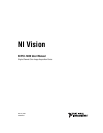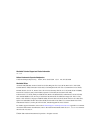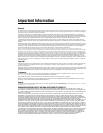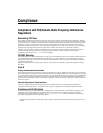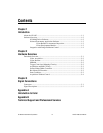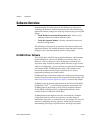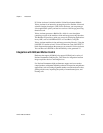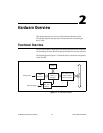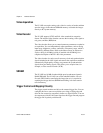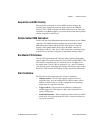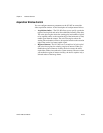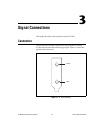
Chapter 1 Introduction
NI PCI-1405 User Manual 1-2 ni.com
Software Overview
Programming the NI 1405 requires the NI-IMAQ driver software for
controlling the hardware. National Instruments also offers the following
application software packages for analyzing and processing your acquired
images:
• Vision Builder for Automated Inspection (AI)—Allows you to
configure solutions for common inspection tasks.
• Vision Development Module—Provides customized control over
hardware and algorithms.
The following sections provide an overview of the driver software and
application software. For detailed information about individual software
packages, refer to the documentation specific to the package.
NI-IMAQ Driver Software
The NI 1405 ships with NI Vision Acquisition Software, which includes
the NI-IMAQ driver software. NI-IMAQ has an extensive library of
functions—such as routines for video configuration, continuous and
single-shot image acquisition, memory buffer allocation, trigger control,
and device configuration—you can call from your application development
environment (ADE). NI-IMAQ handles many of the complex issues
between the computer and the image acquisition device, such as
programming interrupts and camera control.
NI-IMAQ performs all functions required for acquiring and saving images
but does not perform image analysis. For image analysis functionality, refer
to the National Instruments Application Software section of this chapter.
NI-IMAQ is also the interface path between the NI 1405 and LabVIEW,
LabWindows
™
/CVI
™
, or a text-based programming environment. The
NI-IMAQ software kit includes a series of image acquisition libraries
for LabVIEW, LabWindows/CVI, and Measurement Studio, which
contains libraries for Microsoft Visual Basic.
NI-IMAQ features both high-level and low-level functions. Examples
of high-level functions include the sequences to acquire images in
multi-buffer, single-shot, or continuous mode. An example of a low-level
function is configuring an image sequence, which requires advanced
understanding of the image acquisition device and image acquisition.



